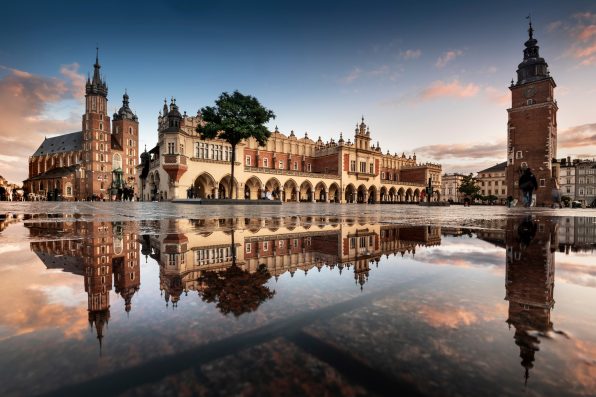The Face Of A 400-Year-Old Vampire Woman Has Been Reconstructed After She Was Buried In Poland With A Sickle On Her Neck And A Padlock On Her Foot

During the 17th century, a young woman was interred in an unmarked grave in the village of Pień in northern Poland.
She was buried with a padlock on her foot and an iron sickle placed across her neck—telltale signs of a “vampire burial.”
These types of burials were meant to prevent individuals who were deemed supernatural from rising from the grave and attacking people. Clearly, the neighbors of this woman feared that she may have been a vampire.
Back then, towns across Europe were struggling with famine and disease. The fear and uncertainty from these conditions gave rise to panic and superstition.
Individuals with disabilities, those who did not follow social norms, and foreigners were often accused of being supernatural and received the blame for unfortunate events that occurred.
A team of scientists has reconstructed the woman’s face 400 years after her death. She has been dubbed “Zosia.”
They used DNA, three-dimensional printing, and modeling clay to reveal what Zosia may have looked like.
“It’s really ironic, in a way,” said Swedish archaeologist Oscar Nilsson. “These people burying her, they did everything they could in order to prevent her from coming back from the dead…we have done everything we can in order to bring her back to life.”
Zosia was discovered in Grave No. 75 in 2022 by archaeologists from Torun’s Nicolaus Copernicus University (NCU). She was between the ages of 17 and 21 when she died.

Arkadiusz – stock.adobe.com – illustrative purposes only – pictured above is the main square in Krakow, Poland
The padlock, sickle, and certain types of wood found at the gravesite were all believed to be able to protect against vampires.
According to Slavic folklore, vampires could come back from the dead and wreak havoc on communities unless the proper safety measures were taken.
Among the other bodies at the site was a “vampire” child, who was buried face down and also padlocked at the foot. Zosia’s burial was the first one in Poland to contain both a padlock and a sickle.
The items she was buried with indicated that she came from a wealthy family, who were possibly nobles.
There were precious metals, traces of a pillow, and fragments of silk threads. It raises the question of why her community considered her a threat.
An analysis of her skull suggested that she suffered from a health condition that may have caused fainting, severe headaches, and mental health issues.
“She was neither ritually murdered nor was she one of the convicted in the witchcraft trial. Those individuals were treated in a different way and, usually, they were thrown into provisional graves,” said Dariusz Poliński, a professor from the Archaeology Institute of NCU.
“It is possible that in her lifetime, the woman experienced a tragedy and was harmed. On the other hand, her appearance or behavior might have provoked the contemporary residents to be afraid of her.”
The recreation of Zosia’s face began with a three-dimensional printed replica of the skull. Then, layers of plasticine clay were gradually built up to form the “muscles” of the face. Information about her age, gender, and ethnicity was also used to help with the process.
In the end, Zosia was given back her identity and will no longer be remembered as the monster she was buried as.
Sign up for Chip Chick’s newsletter and get stories like this delivered to your inbox.
More About:News





